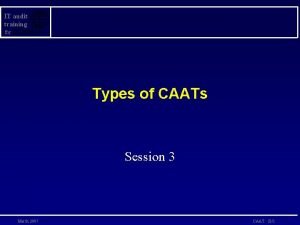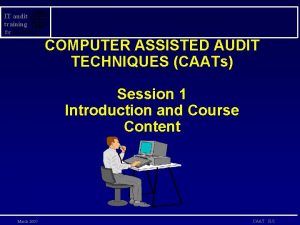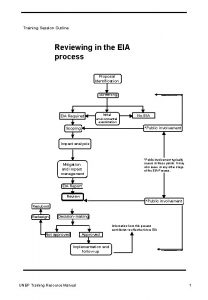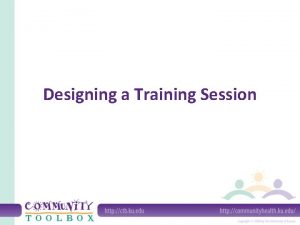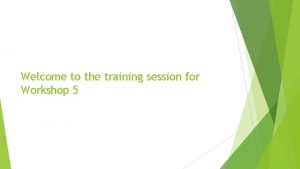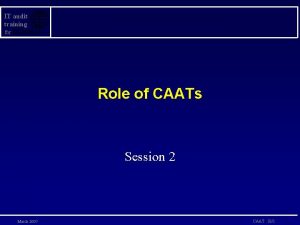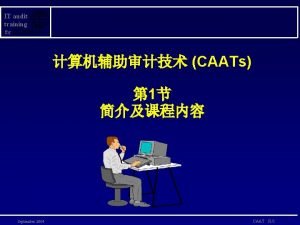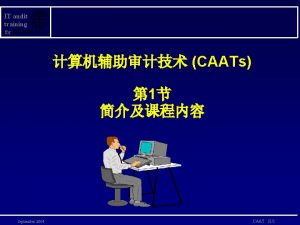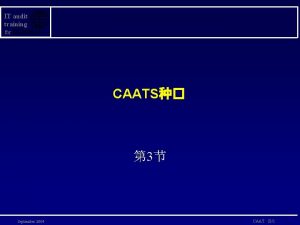IT audit training for Role of CAATs Session






- Slides: 6

IT audit training for Role of CAATs Session 2 March 2007 CAAT S 2/1

IT audit training CAATs – A Definition for F Computer based tools which can be used to improve the effectiveness and efficiency of the audit process V V F Use of CAATs results in V V March 2007 Techniques employed by auditors that use the computer as a tool for gathering and analysing audit data Tools used only for administration of audit not covered in this training module Changes in audit methodologies; NOT in audit objectives CAAT S 2/2

IT audit training Trends in use of CAATs for F F Initial use of IT systems by auditees met by “audit around the computer” Subsequently, “audit through the computer” using CAATs, with benefits in V V March 2007 Audit planning; and Audit execution CAAT S 2/3

IT audit training Trends (Contd. ) for F Changing focus of CAATs use ( in line with changing nature/focus of SAI audit) V V March 2007 Not just financial and compliance audits; Also performance and investigative audits CAAT S 2/4

IT audit training Audit Planning – Role of CAATs for F Improvement of audit effectiveness V Trends and patterns more clearly visible » V Ability to play around with data in “free form”, before commencing audit » March 2007 Better focus for manual/computerised audit Especially important for performance and forensic/investigative audits CAAT S 2/5

IT audit training Audit Execution – Role of CAATs for F Improvement of audit efficiency V V March 2007 Better audit coverage Savings in time and cost More complex audit interrogations and better analytical capability Greater opportunities to develop innovative audit approaches CAAT S 2/6
